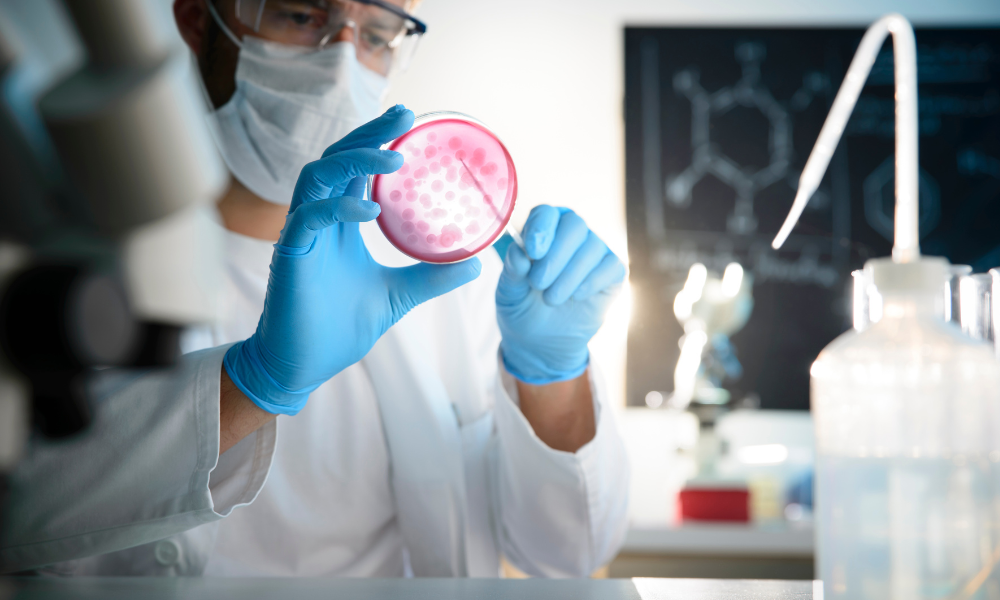How Modern Manufacturing Enables Better Choices

When it comes to sterilization, more isn’t always better. Most legacy sterilization strategies are designed to tackle high or unknown levels of contamination. However, just like you wouldn’t use a blowtorch to light a candle, high dosages of sterilant aren’t always the best approach, especially for devices manufactured in clean, tightly controlled environments where bioburden is well managed.
Most manufacturers are not aware that there are different sterilization validation strategies that can be employed for their device. There are three primary pathways to validating a sterilization process for medical devices: Overkill, Bioburden-based, and the Combined Overkill/Bioburden method. Understanding these options not only ensures compliance with standards, but it also allows companies to align validation with their product’s unique design, material sensitivities, and development timeline.
The Overkill Method
The overkill method is perhaps the most widely known and applied validation strategy. It is based on challenging the sterilization process with a highly resistant biological indicator (BI)—commonly Geobacillus stearothermophilus for moist heat or Bacillus atrophaeus for ethylene oxide—and then demonstrating that the process can deliver a theoretical 12-log reduction in microbial population in order to claim SAL6 (sterility assurance level
Advantages:
- Straightforward approach with broad regulatory acceptance.
- Less reliance on routine bioburden testing.
- Well-suited for high-volume devices with durable materials.
Limitations:
- Can be unnecessarily aggressive for heat- or chemical-sensitive devices.
- Longer cycle times and harsher conditions can compromise material integrity.
The Bioburden Method
Unlike overkill, the bioburden method tailors the sterilization cycle to the native microbial load and resistance profile present on the device. This approach requires a thorough bioburden assessment, including routine microbial enumeration and characterization throughout the on-going manufacturing process. Validation then demonstrates that the sterilization cycle reduces the naturally occurring bioburden to an acceptable SAL.
Advantages:
- Less aggressive sterility impact on device performance—often considered for devices with sensitive polymers, biologics, or combination products.
- Potential for shorter cycle times and reduced impact on product performance.
Limitations:
- More complex and resource-intensive for manufacturer, as it demands robust bioburden monitoring.
- Expands complexity of interactions with regulatory agency.
The Combined Overkill/Bioburden Method
As the name implies, this method combines elements of both the overkill and the bioburden methods to validate the desired SAL for the chosen sterilization process.
In this method, regardless of what the native bioburden is determined to be, the sterilization validation process has to demonstrate the ability to eliminate at least 103 microorganisms. Because of the lower bacterial indicator load, a milder sterilization protocol can be used. This is beneficial when processing products comprised of materials that are sensitive and have limited sterilization modality options.
Despite this approach requiring a lower bioburden (at least 103 versus 106), it still requires the same additional 6-log safety factor utilized in the overkill method, thus meeting the regulatory requirements to claim SAL6. The lower bioburden is allowed because environmental microbial monitoring of the facility, process, and product is monitored intermittently. The combined method requires less monitoring than the bioburden method. The combined method is an effective way to use the lowest amount of sterilant to preserve the functionality of sensitive devices while ensuring safety and keeping production costs low by limiting the type and amount of environmental monitoring required. Although this sterilization validation method was rarely used historically, it is being more frequently utilized as the FDA becomes more comfortable with the approach.
Where Supercritical Carbon Dioxide Fits In
Historically, overkill and bioburden validations have been applied to traditional sterilization modalities such as steam, ethylene oxide (EtO), and radiation. However, as the medical device industry advances into more complex biomaterials, regenerative medicine, and tissue-based products, these conventional methods can fall short.
That’s where supercritical carbon dioxide (scCO₂) sterilization offers a unique opportunity. Supercritical CO₂ sterilizes devices at low temperatures and without leaving carcinogenic residues. This makes it particularly valuable for:
- Devices incorporating biologics or temperature-sensitive polymers.
- Tissue-based products requiring structural and biochemical preservation.
- Manufacturers seeking greener, more sustainable alternatives to EtO.
Just like traditional methods, scCO₂ sterilization can be validated using overkill, bioburden, or combined strategies. In fact, the ability to tailor scCO₂ cycles to a product’s microbial profile aligns with the advantages of the bioburden or combined approaches. For manufacturers looking to protect device integrity while still meeting the highest sterility standards, scCO₂ provides a compelling pathway.
Final Thoughts on Bioburden Control and Sterilization Flexibility
Choosing the right sterilization validation strategy is not a one-size-fits-all decision. Overkill, bioburden, and combined approaches each bring strengths and limitations, and the right choice depends on your device’s material composition, intended use, and regulatory pathway.
As industry continues moving toward advanced materials and combination products, manufacturers should also keep emerging sterilization technologies like supercritical carbon dioxide on their radar. Not only does scCO₂ open new doors for sensitive products, but it also allows companies to validate sterilization in ways that balance safety, product integrity, and sustainability.To read more about how Sterility Assurance Level (SAL) and log reduction impact the sterilization validation strategy, see our detailed blog on the topic: Explaining Sterilization Validation: Differences Between the OverKill, Bioburden, and Combined BI/Bioburden Methods.
If you’re preparing to validate a sterilization method for a new product or making a change to your current sterilization approach, NovaSterilis is here to help. Our team can guide and support your validation efforts as part of your overall regulatory strategy. With the right equipment, process expertise, and infrastructure, we provide tailored solutions for optimization, load configuration, and sterilization studies. We bring deep experience in both overkill and combined BI/bioburden validation methods. Contact us to

